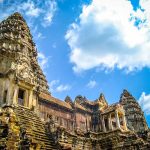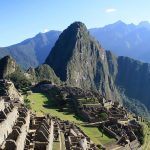GENERAL INFORMATION ON
WORLD HERITAGE SITES
What Are
World Heritage Sites?
https://whc.unesco.org/en/list/
As of June 2025, there are a total of 1,223 World Heritage Sites worldwide. Of these sites, 952 are cultural, 231 are natural and 40 are mixed properties. UNESCO promotes the view that World Heritage sites belong to all peoples, regardless of geographic location.
What is the
World Heritage Convention?
https://whc.unesco.org/en/convention/
The 1972 World Heritage Convention combines concepts of conservation of nature and preservation of cultural properties, linking human interaction and nature. It focuses on five strategic objectives, the “Five Cs”; Credibility, Conservation, Capacity-building, Communication, and Communities. The Convention outlines the duties of States Parties in identifying, protecting and preserving potential sites, and integrating their protection into regional planning programmes.
What is the
World Heritage Committee?
https://whc.unesco.org/en/committee/
The World Heritage Committee meets once a year, and is responsible for the implementation of the World Heritage Convention, decisions regarding additions to the World Heritage List, and the allocation of financial assistance to States Parties.
The Committee consists of 21 States Parties, each holding a term of six years, though most choose to remain for only four years in order to pass on the opportunity to other States Parties. Currently, the 21 consists of Argintina, Belgium, Bulgaria, Greece, India, Italy, Jamaica, Japan, Kazakhstan, Kenya, Lebanon, Mexico, Qatar, Republic of Korea, Rwanda, Saint Vincent and the Grenadines, Senegal, Türkiye, Ukraine, Viet Nam and Zambia.
Advisory Bodies
Sources: https://www.iucn.org/theme/world-heritage, https://www.icomos.org/en/what-we-do/image-what-we-do/268-he-role-of-icomos-in-the-world-heritage-convention, https://www.iccrom.org/section/world-heritage
The World Heritage Committee has the final say on which sites are inscribed on the list, but it has three formal advisory bodies to aid decision making. These are ICOMOS (the International Council on Monuments and Sites), the IUCN (International Union for the Conservation of Nature) and ICCROM (the International Centre for the Study of the Preservation and Restoration of Cultural Property).
ICOMOS is responsible for evaluating nominations of both cultural and mixed properties with regards to the ten criteria, in particular on the basis of “outstanding universal value”. ICCROM also evaluates cultural and mixed sites, helping Member States improve conservation and management of World Heritage Sites. The IUCN is the only advisory body concentrating on natural sites, focusing on promoting the biodiversity, conservation, and oversight of World Heritage properties.
Who advocates for Indigenous Peoples at
World Heritage events?
There are three UN mechanisms which are specifically dedicated to promoting the rights of Indigenous Peoples: the United Nations Permanent Forum on Indigenous Issues (UNPFII), Expert Mechanism on the Rights of Indigenous Peoples (EMRIP) and the Special Rapporteur. All have called for the Convention and its Operational Guidelines to be reformed and aligned with UNDRIP, citing a need for indigenous peoples’ consent, a need for transparency, and measures to ensure that the livelihood and cultural heritage of indigenous peoples are protected.
The IIPFoWH, following its official launch at the 42nd Session of the World Heritage Committee in Bahrain, will engage with the World Heritage Committee during its meetings in order to advance this agenda.
Inscription Criteria
In order to be classified as a World Heritage Site, sites must be of
“outstanding universal value”, meeting at least one of the ten selection criteria.
The site must contain superlative natural phenomena or areas of exceptional natural beauty and aesthetic importance

The site must be an outstanding example representing major stages of the earth’s history, including the record of life, significant on-going geological processes in the development of landforms, or significant geomorphic or physiographic features.

The site must be an outstanding example representing significant on-going ecological and biological processes in the evolution and development of terrestrial, freshwater, coastal and marine ecosystems and communities of plants and animals.

The site must contain the most important and significant natural habitats for in-situ conservation of biological diversity, including those containing threatened species of outstanding universal value from the point of view of science or conservation

The site must represent a masterpiece of human creative genius

The site must exhibit an important interchange of human values, over a span of time or within a cultural area of the world, on developments in architecture or technology, monumental arts, town-planning or landscape design

The site must bear a unique or at least exceptional testimony to a cultural tradition or to a civilization which is living or which has disappeared
The site must be an outstanding example of a type of building, architectural or technological ensemble or landscape which illustrates (a) significant stage(s) in human history

The site must be an outstanding example of a traditional human settlement, land-use, or sea-use which is representative of a culture (or cultures), or human interaction with the environment especially when it has become vulnerable under the impact of irreversible change
The site must be directly or tangibly associated with events or living traditions, with ideas, or with beliefs, with artistic and literary works of outstanding universal significance








